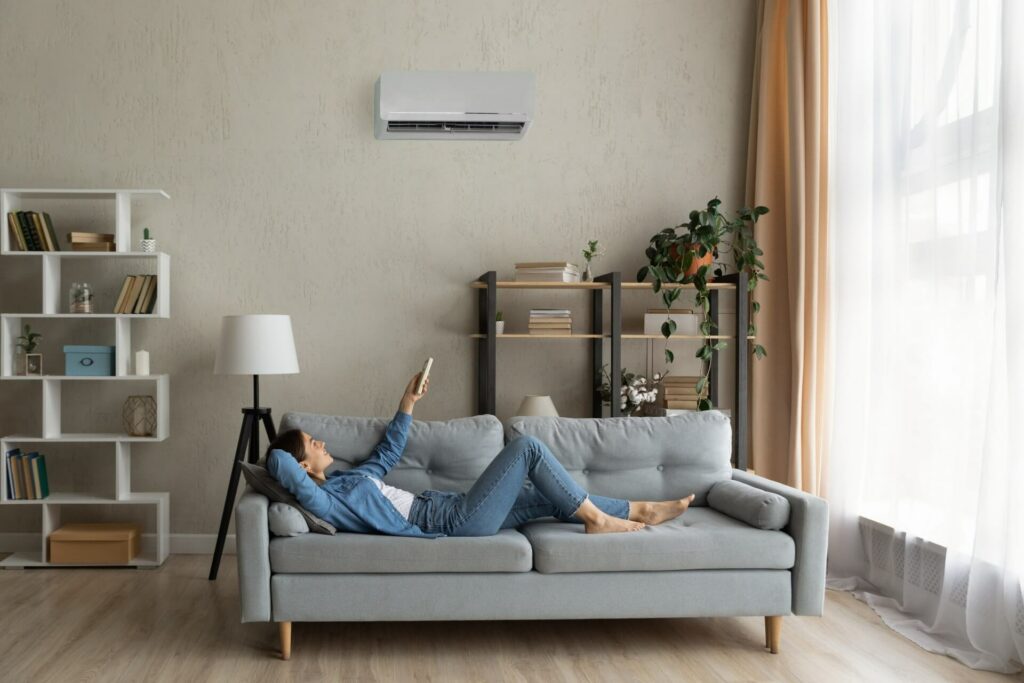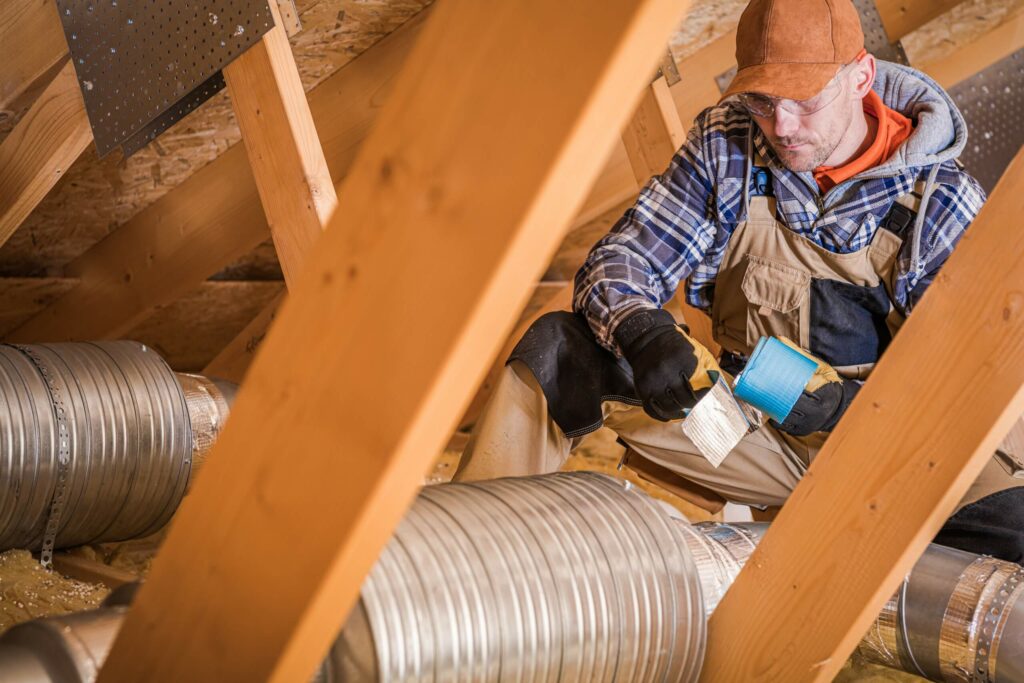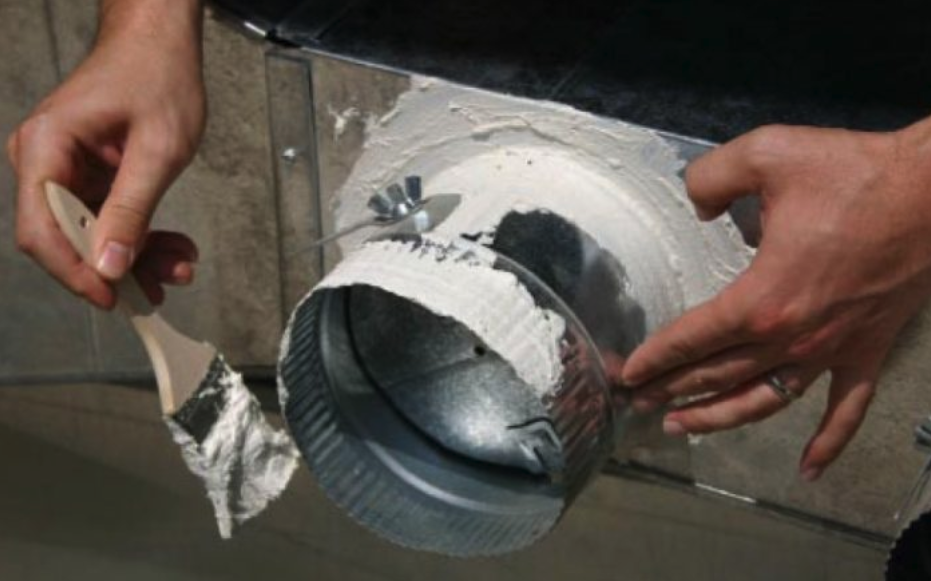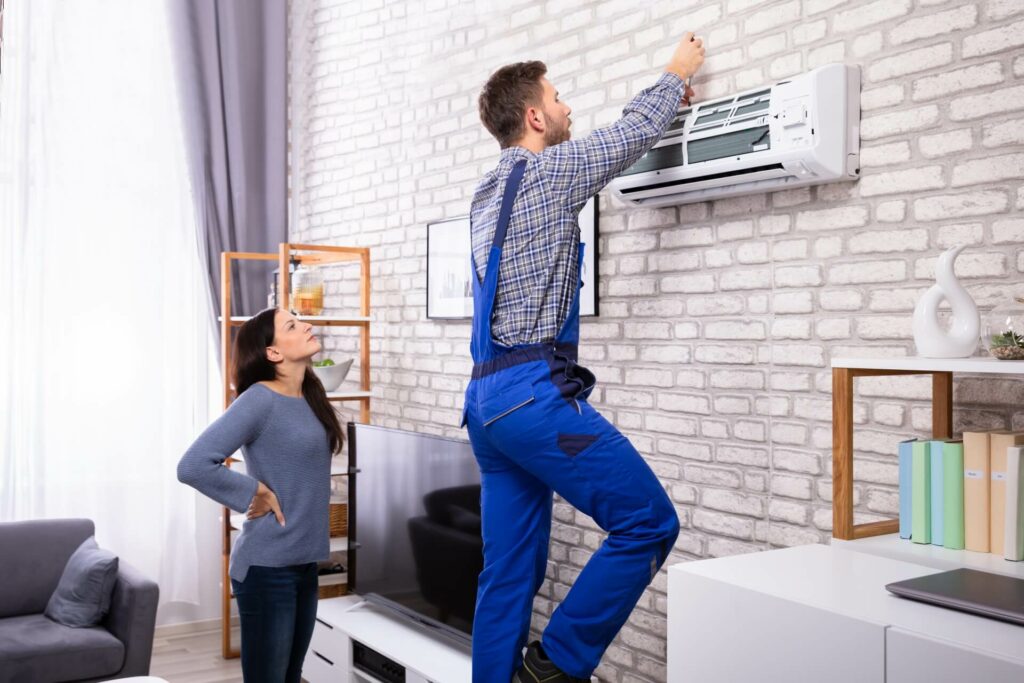Duct Sealing Methods: 3 Solutions for Sealing Your Ductwork

Your home’s ductwork is vital for comfort, health, and safety.
When it comes to keeping your home warm in the winter and cool in the summer, your ductwork will be doing the heavy lifting. Ductwork is the piping and connective tissue that connects from your furnace to every room in the house.
The setup of your ductwork might seem simple enough, but it’s actually a bit more complicated than you might think.
For example, each room will require different sized ducts connecting it to the furnace, depending on the size of the room. This can lead to a lot of little corners, curves, bends, and places where the ductwork could become leaky.
A large percentage of homeowners have leaks in their ductwork right now and don’t even realize it.
Even the most minor leaks can cause issues that you would want to resolve immediately.
What are Signs of Leaky Air Ducts?
Here are some of the most common signs of leaky air ducts in your home:
- You may notice cold or hot air coming from registers in different rooms.
- You may hear whistling or other noises coming from your ducts.
- Your energy bills may be higher than expected.
- You may have dust or dirt buildup in your home.
- You may have more respiratory problems, such as allergies or asthma. Indoor air quality can be negatively impacted by leaky air ducts.


Benefits of Sealing Leaky Air Ducts
Leaky air ducts not only compromise the efficiency of your HVAC system but can also adversely impact the quality of air inside your home.
Duct sealing helps the quality and efficiency of moving conditioned air throughout your home. Sealing these ducts is essential for optimal home comfort, health, and energy consumption while lowering your utility bills.
Continue reading to learn more.
1. Improve Indoor Air Quality
Leaks in ducts can allow unfiltered air, dust, pollen, and other allergens into your home. This can lead to respiratory problems and aggravate allergies and asthma symptoms. Sealing leaky air ducts can help to improve your home’s indoor air quality by preventing these contaminants from entering your home.
2. Sealing Leaks Improves Energy Efficiency, Heating, and Cooling
In addition, sealing leaky air ducts can help to improve your home’s energy efficiency. When air leaks out of your ducts, your HVAC system has to work harder to heat or cool your home.
3. Ultimately, Reduce Your Energy Bills and Utilities
Improving energy efficiency will help to reduce your energy consumption and save you money on your bills. If you are concerned about the quality of the air in your home, sealing leaky air ducts is a good place to start. This simple and effective home improvement can help to improve your health and save you money.
At the end of the day, a properly sealed duct system is going to improve your home’s air quality, energy efficiency in circulating your heated or conditioned air, and utility costs.
Duct Sealing Methods: Seal Duct Leakage with Sealant Tape vs. Mastic Duct Sealant vs. Aeroseal
There are a few different duct sealing methods you can use if you have leaky ducts. In order to bring you up to speed on how you can fix your leaky ductwork in how best suits you, let’s go through a few of the most popular options on the market:
1. Duct Sealing Tape or Duct Tape

One of the ways you can seal leaky ductwork is with HVAC duct sealing tape. Also known as aluminum foil tape, HVAC duct sealing tape comes on a roll and can be found in every hardware store.
This method for sealing leaky ducts can be less time consuming and messy, but doesn’t tend to stack up with other duct sealing methods in terms of performance and longevity.
If you have ducts that get dirty or oily commonly, duct sealing tape is likely to fail. However, if you insist on using this option for whatever reason, your best bet is to go with either foil tape, butyl tape, or any other kind of duct sealing tape which is marked with the UL logo.
This logo stands for “Underwriters Laboratories.” It signifies the tape is suitable for residential use on ductwork. Never try to seal your ducts with regular duct tape. It’s not fire- or smoke-rated and will not hold up for very long.
2. Duct Mastic Sealant

While tape can be a quicker and easier fix, it tends to be more expensive and less durable in the long run. A better option is to use mastic air duct sealant.
This is a gooey substance which hardens after applying to your ducts. Water-based mastic duct sealant is the best option because it cleans up easier and will hold up for a long time.
When using mastic duct sealant on your own, you can apply it with a simple paintbrush. You may also use a caulk gun to apply the duct mastic, though it’s unnecessary.
Remember not to get duct mastic sealant confused with regular “duct seal.”
Duct seal is for sealing the outside of your home around electrical wires and other tiny gaps. It is not made for use on your leaky ductwork.
Depending on the size of your leak, you may need to combine your liquid mastic with another product such as fiberglass mesh tape. This applies to gaps bigger than ¼ of an inch.
3. Aeroseal

While it’s true that mastic for ductwork is the best DIY choice for durability and cost-effectiveness, sealing ducts with mastic yourself can be tricky.
Especially in those hard to reach areas, it can be nearly impossible to use mastic sealing for ducts on your own when there are hidden leaks behind drywall.
That’s where Aeroseal comes in.
Aeroseal uses a patented technology to pressurize the duct system while identifying and sealing every single leak in it.
Our duct sealing technology has actually been called “one of the best scientific and technological accomplishments since this department was first established” by the U.S. Department of Energy.
Aeroseal can completely remove the mess and struggle from mastic sealing ducts on your own.
Here’s an overview of how Aeroseal technicians can quickly analyzing and work on sealing air ducts from the inside:
- First, the technician will block all of your registers and vents in order to pressurize your system.
- Once pressurized, they’ll use a computer to analyze the data. This helps them identify all the leaks, cracks, and holes in your ductwork.
- Next, the technician will measure your current leakage. This will later give you a before and after comparison of your air duct leakage.
- Once this is done, they will begin distributing their mastic sealant for ducts throughout the air vents and ducts. The technology used is so precise that they only use the exact amount of sealant needed, making cleanup a breeze.
Once finished, the Aeroseal technician will re-measure your ductwork to see what the leakage percentage is. That way, you can compare the amount of air flowing through your system, before and after they seal your system.
Rooms that weren’t getting enough air before should be balanced and well-circulated. Aeroseal’s customers will notice an immediate improvement in their air quality.
You’ll notice an improvement in the smell and purity of the air is better too.
Since the leaks in the ductwork have been fixed, dust and dirty air can’t get into the pipes and spread throughout the house.
Now, all it will take to maintain perfect indoor air quality is a good air filter, which you won’t have to change as often because there won’t be as much dirt and dust getting through.
How to Seal Duct Work: Can I Seal Leaky Air Ducts Myself?
Yes, you can seal leaky air ducts yourself using duct sealing tape or mastic duct sealant.
However, it is important to do a thorough job to ensure that all the leaks are sealed. If you are not comfortable sealing the ducts yourself, hire a professional.
Struggling with Leaky Air Ducts? Let Aeroseal Seal Your Air Ducts and Leaky Ductwork for the Best Results

While it’s true there are a few different ways you can try to seal the leaks in your ducts, letting the pros handle it is the best decision you can make.
There are bound to be small cracks and leaks in places you can’t reach on your own. So, the pressurized system like the one Aeroseal uses is the only surefire way to get the best results.
Want to improve your indoor air quality, save money on heating and cooling, and make sure every room is getting the exact amount of warm or cool air that it needs?
Book an appointment with an Aeroseal technician today.
Additional Resources
- Duct Sealing 101: What is Duct Sealing?
- Air Duct Cleaning 101: The Ultimate Guide To Cleaning & Preventing Dirty Ducts.
- Why Is This Room So Cold? Solving Temperature Imbalances Within Your Home.
- 18 Ways To Achieve A More Energy Efficient HVAC
- Air Ducts 101: Ductwork Vs Duct Work, What’s The Difference?













